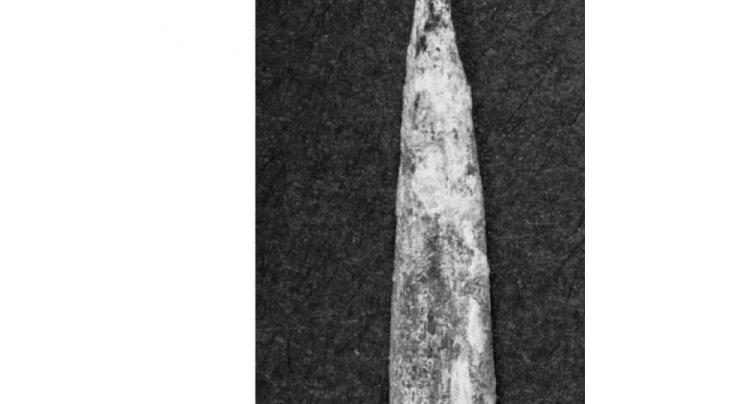
Humans Settled Earlier In Australia's Remote Outback
Rukhshan Mir (@rukhshanmir) Published November 02, 2016 | 11:20 PM

SYDNEY,, (APP - UrduPoint / Pakistan Point News - 02nd Nov, 2016 ) - Humans started to settle inland Australia 10,000 years earlier than previously believed, scientists said Thursday, after discovering thousands of artefacts and bones in a rock shelter in the remote outback.
People are thought to have arrived in Australia around 50,000 years ago. But the timing of their settlement in the arid interior, their use of tools and their interaction with ancient animals has been under debate.
The researchers said the discoveries in the Flinders Ranges of South Australia, 450 kilometres (280 miles) from the state capital Adelaide, showed that humans occupied the site from 49,000 to 46,000 years ago.
"We present evidence from Warratyi rock shelter in the southern interior that shows that humans occupied arid Australia by around (49,000 years ago), (10,000 years) earlier than previously reported," the report published in the journal Nature said.
The objects recovered from layers of sediment also represented the earliest-known use in Australia of technologies such as bone tools (40,000 to 38,000 years ago) and pigments like red ochre (49,000 to 46,000 years ago).
"It complements the work that has been done on Australia's coasts. It fits in with this threshold of dates... between 45,000 and 50,000 (years ago)," research archaeologist Giles Hamm from South Australia's La Trobe University, the study's lead researcher, told reporters.
"What is different about it is it's the southern-most oldest site in the continent ... it shows that people are moving very quickly around the continent and in the interior part of the continent.
"If people are coming in at 50,000 (years ago), it means that people are moving in a whole range of directions perhaps. And we've got some new genetic evidence that might be also adding data to that question." The study -- which also involved the University of Adelaide, Flinders University and Clifford Coulthard from the Adnyamathanha Traditional Lands Association -- recovered 4,300 artefacts, three kilogrammes (6.6 Pounds) of bones, ochre and plant matter.
A recovered bone chunk was identified as coming from a Diprotodon optatum, the largest-known marsupial, while an eggshell was linked to a giant extinct bird, suggesting that humans were interacting with ancient animals, megafauna expert Gavin Prideaux from Flinders University said.
"Humans evidently lived alongside these animals and hunted them, so the idea that there wasn't any interaction between people and these animals is put to bed now," Prideaux added.
Related Topics
Recent Stories

Tennis: ATP Barcelona Open results - 1st update

Swiatek's perfect 10 in Stuttgart as Vondrousova stuns Sabalenka

Arandu's roads closed due to flooding

Oil tanker catches fire in Islamabad’s Blue Area

Pakistan committed to ensure safety of foreign nationals: FO

Tennis: WTA Stuttgart results - 1st update

Four passengers injured as train hit an empty vehicle

Over- speeding bus crushed to death two bike riders

Turkey's Freedom Flotilla ready to set sail for Gaza

French teen dies from heart failure after knife attack near school

Iranians appear unfazed by Isfahan blasts

UAF celebrates Int'l Chinese Language Day
More Stories From World
-
Togo lawmakers approve contested political reform
4 hours ago -
NATO must choose 'whether we indeed are allies': Zelensky
4 hours ago -
US House to vote on Ukraine, Israel, Taiwan aid package
4 hours ago -
Calls for calm after reported Israeli strike on Iran
4 hours ago -
IMF calls on EU to deepen single market integration to boost growth
4 hours ago -
Second Ecuadoran mayor killed ahead of anti-crime referendum: police
4 hours ago
-
Oil, gas drilling blocked in Alaska wilds as Biden seeks green cred
5 hours ago -
Man sets self on fire outside Trump trial
5 hours ago -

Turkey's Freedom Flotilla ready to set sail for Gaza
6 hours ago -

French teen dies from heart failure after knife attack near school
6 hours ago -

Iranians appear unfazed by Isfahan blasts
6 hours ago -

Ecuador mayor killed ahead of anti-crime referendum: police
7 hours ago



